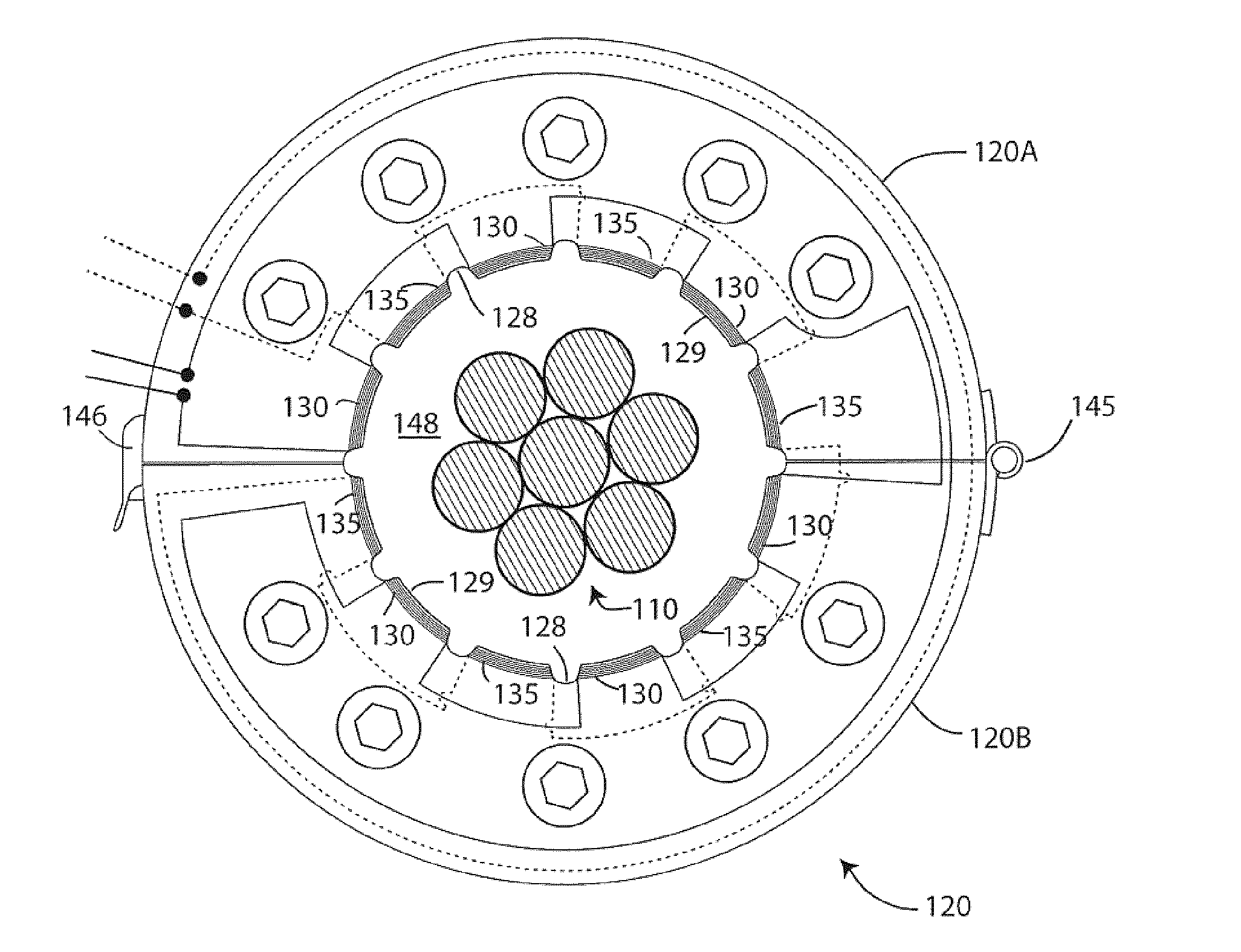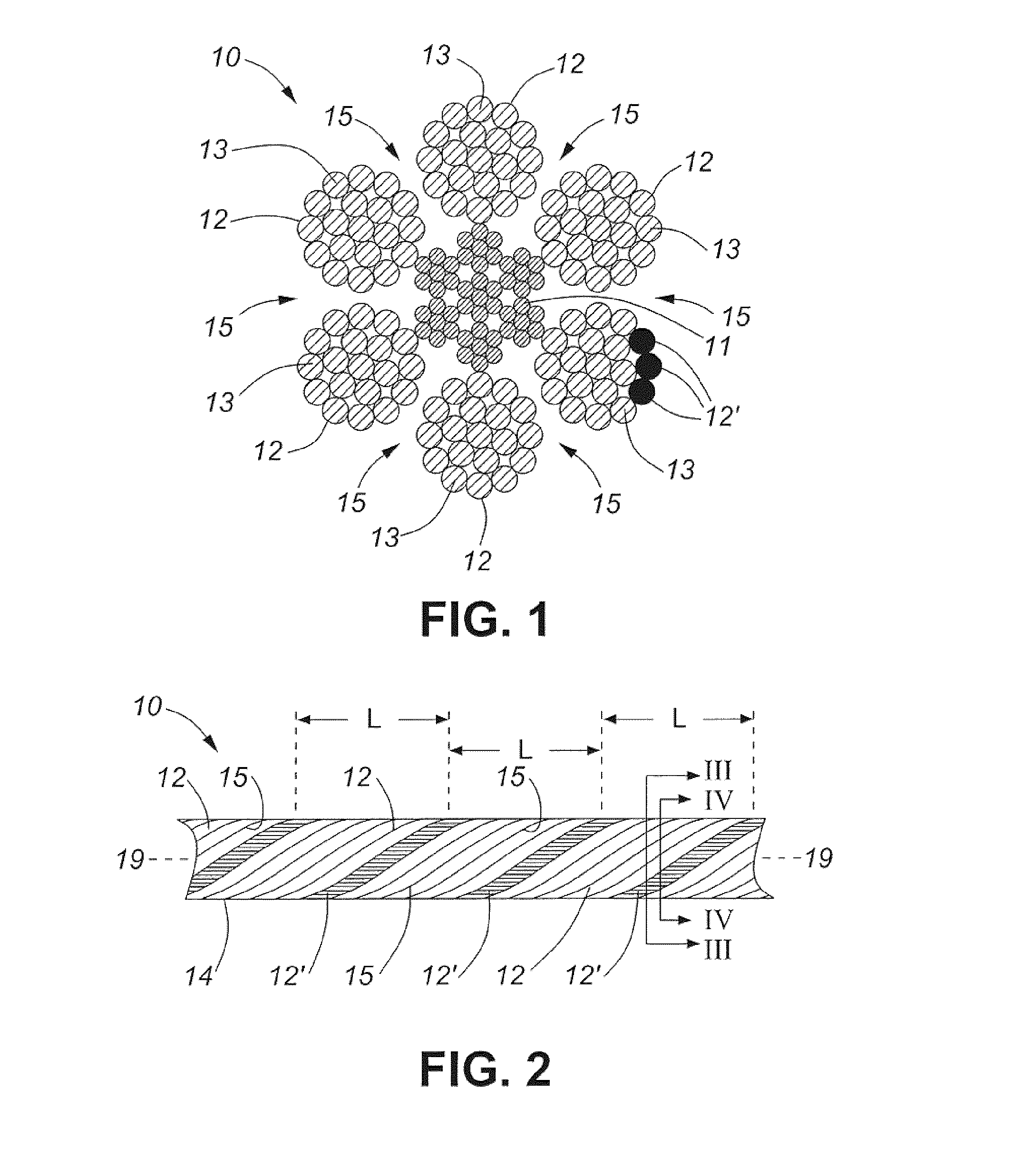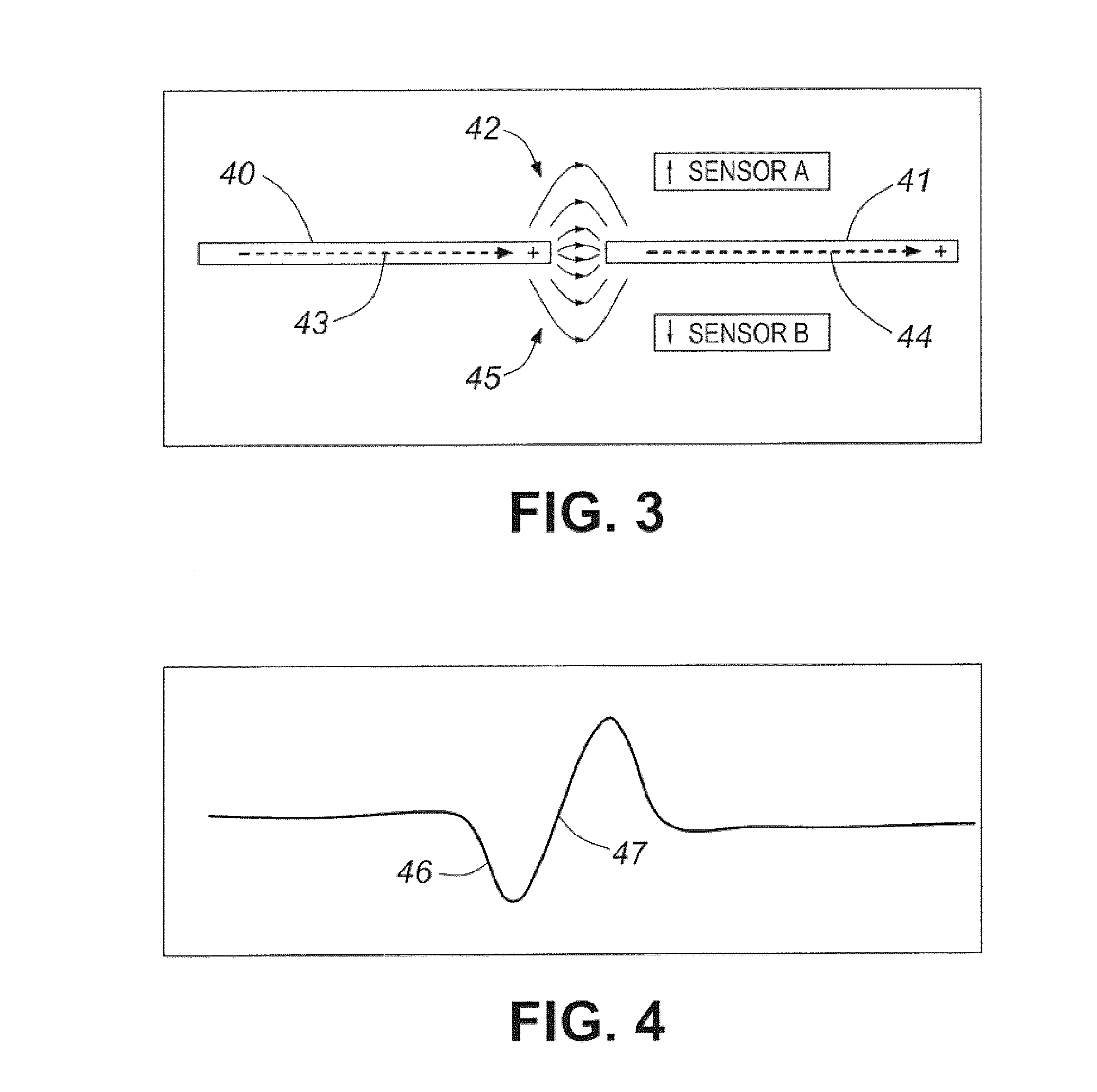Device for Analysis of Synthetic Rope or Cable, and Method of Use
- Summary
- Abstract
- Description
- Claims
- Application Information
AI Technical Summary
Benefits of technology
Problems solved by technology
Method used
Image
Examples
example 1
Non-Destructive Test Methods for High-Performance Synthetic Rope
[0140]Interest in high performance-synthetic ropes for mine hoisting has increased as mine operators pursue resources at greater depths. One limiting factor for hoisting capacity is the self-weight of steel wire used as the hoist rope. The significantly higher strength to weight ratio of synthetic rope offers the attractive alternative to enable hoisting a larger payload with a similar size rope and hoisting plant.
[0141]Due to the critical nature of hoist rope service, frequent and reliable inspection methods are required and regulated. Visual inspection and a variety of electromagnetic methods are used to monitor in-situ the integrity of presently used wire ropes for mine hoisting. Wire ropes have been used for decades in hoisting applications and the data acquired through nondestructive test (NDT) methods can be correlated with a wealth of data and experience to ensure safe and successful operation.
[0142]For synthetic...
example 2
Scaled CBOS Test Results and MFL Device Output
Introduction
[0158]As easily accessible resources near the surface are depleted, the mining industry must go deeper and deeper to reach materials. The current system of steel wire ropes has limitations. At a depth of more than 7,500 feet a steel wire can no longer be used and a second shaft with a second hoist and wire must be installed. The two stage process greatly slows down the extraction of materials and contributes to increased operations costs. This along with many other factors makes synthetic ropes an economically viable alternative to steel wire at greater depths.
[0159]Synthetic ropes for mine hoisting are being developed out of an aramid fiber, Twaron. This fiber was chosen for its high strength-to-weight ratio and high elastic modulus. These properties allow a similar diameter and stiffness rope to that of the current steel wire with one-fifth the weight. The fiber also has the advantage of being heat, cut and chemically resis...
PUM
 Login to View More
Login to View More Abstract
Description
Claims
Application Information
 Login to View More
Login to View More - R&D
- Intellectual Property
- Life Sciences
- Materials
- Tech Scout
- Unparalleled Data Quality
- Higher Quality Content
- 60% Fewer Hallucinations
Browse by: Latest US Patents, China's latest patents, Technical Efficacy Thesaurus, Application Domain, Technology Topic, Popular Technical Reports.
© 2025 PatSnap. All rights reserved.Legal|Privacy policy|Modern Slavery Act Transparency Statement|Sitemap|About US| Contact US: help@patsnap.com



